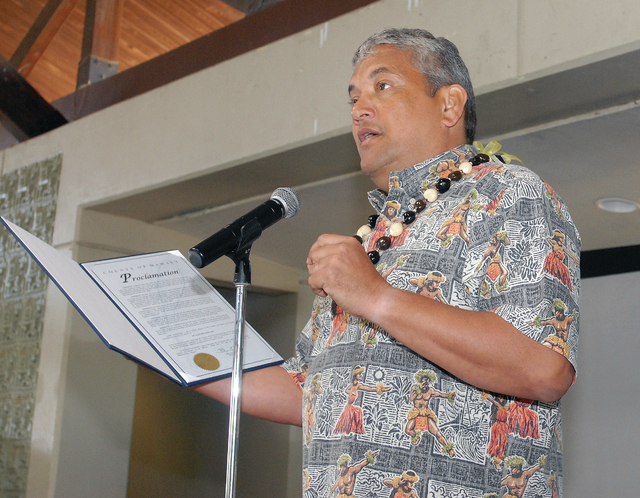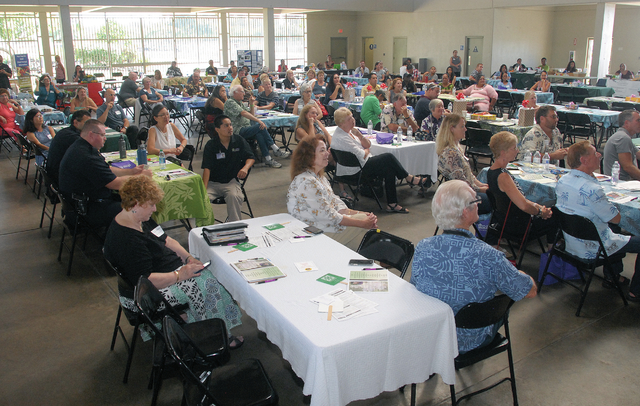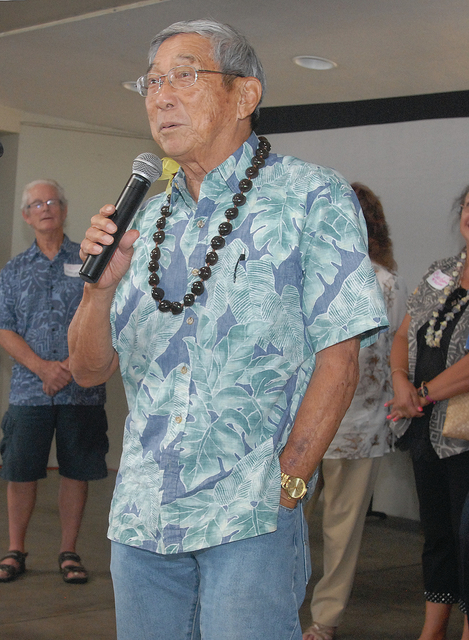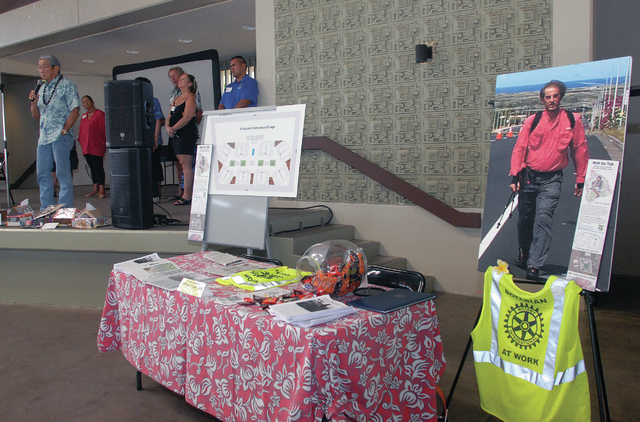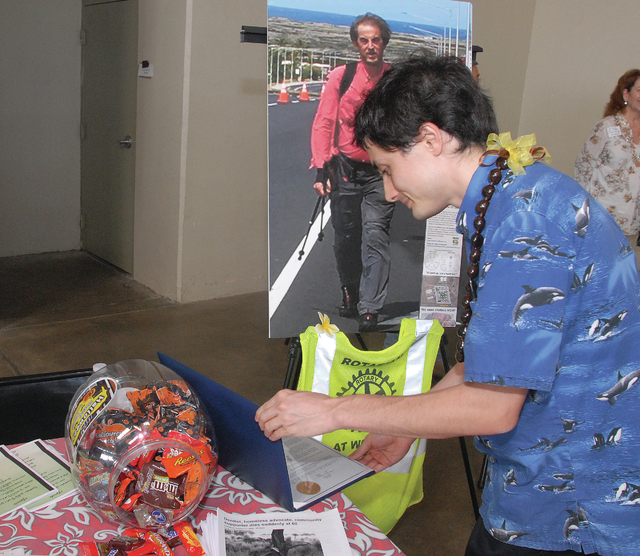KAILUA-KONA — From 2015-2016, the Big Island’s homeless population increased 12 percent to 1,394 people, according to this year’s statewide Homeless Point-in-Time count. ADVERTISING KAILUA-KONA — From 2015-2016, the Big Island’s homeless population increased 12 percent to 1,394 people, according
KAILUA-KONA — From 2015-2016, the Big Island’s homeless population increased 12 percent to 1,394 people, according to this year’s statewide Homeless Point-in-Time count.
To help address that issue, the island’s advocacy groups invited congregations and other faith groups to learn and share what opportunities are available to take care of the island’s homeless.
On Tuesday, service providers and faith groups joined together at the Old Airport Pavilion for the West Hawaii Faith-Based summit on Family Homelessness.
Brandee Menino, chief executive officer of HOPE Services Hawaii, an organization dedicated to providing services to the county’s homeless, said the event was an opportunity to organize and share what the island’s various congregations and service providers can offer to curb homelessness on island.
It was the first time, she said, they had organized together people of different faith communities here.
The organization previously held a homelessness summit on the island’s east side, which attracted calls to hold a similar event here.
“It wasn’t a hard sell,” she said. “(Faith groups) want to help; they just don’t know how to help.”
According to the National Low Income Housing Coalition, a West Hawaii resident making minimum wage would need to work 108 hours a week, roughly 15 hours a day every day, to rent a two-bedroom apartment.
Any less would require the renter to spend more than 30 percent of his or her income on housing, which the federal government considers “cost burdened,” impacting families’ abilities to afford food, clothing and other necessities.
In Hawaii County, more than half of the island’s 22,101 renters are considered cost-burdened, said West Hawaii Habitat for Humanity executive director Patrick Hurney.
Hurney explained that the cost of housing is a large burden for families, adding that they see families come from a variety of situations.
Home ownership, he explains, doesn’t just contribute to financial well-being, he said, it also brings with it social benefits, such as improved academic performance. Home ownership also benefits the regional economy.
In 2012, Habitat for Humanity built five homes in 10 days for the organization’s “Blitz Build.”
Next year, they’re taking on an even more ambitious project: 10 homes in 10 days.
“And we need everyone’s help,” he said. “We need the community’s help.”
In addition to presentations from several of the island’s nonprofit leaders, the conference also gave attendees a chance to get into smaller groups and talk about individual ways congregations and individuals can fight homelessness.
Joel Rogers and Drew Reuss, both from Youth With a Mission, led a discussion about the “tiny house” movement and how it could provide opportunities for the island’s homeless.
The tiny house movement emphasizes small, inexpensive residences.
The first hurdle to introducing tiny homes to the county, said Rogers, would be advocating for a change in zoning laws, which set standards for houses.
But, he said, the county has a real chance to be on the forefront of a new movement in housing and development.
“It’s still on the cutting edge,” he said. “We’d love to see more of these types of dwellings that do make sense for our island.”
Rogers added that there are already ongoing conversations about where homes could be built and how it can help reduce homelessness here.
“It’s exciting to think we could actually fix this,” he said. “It’s not just some ‘pie in the sky, wouldn’t it be wonderful if.’ This is doable.”
Linda McLaughlin and Jasmine Staup both said they were glad they attended the event, saying it gave them a chance to learn more about what’s happening in the community and the role they can play in helping the homeless.
“We need to educate each other about what we’re doing,” said Staup.
Both women work in the Department of Health’s public health nursing branch. They said it’s important for those providing services to connect with congregations embedded in the community.
“If we have a connection, maybe we can put each other in to contact with whoever needs services,” Staup said.


